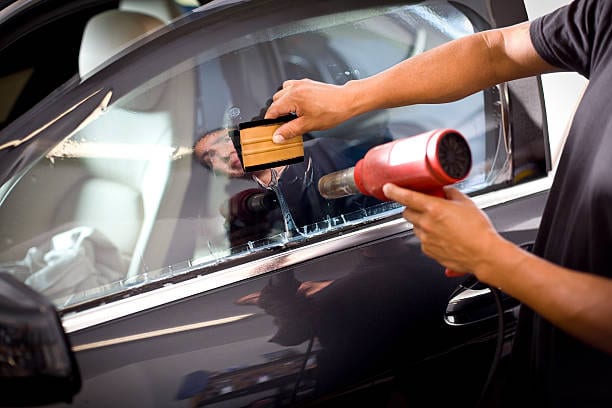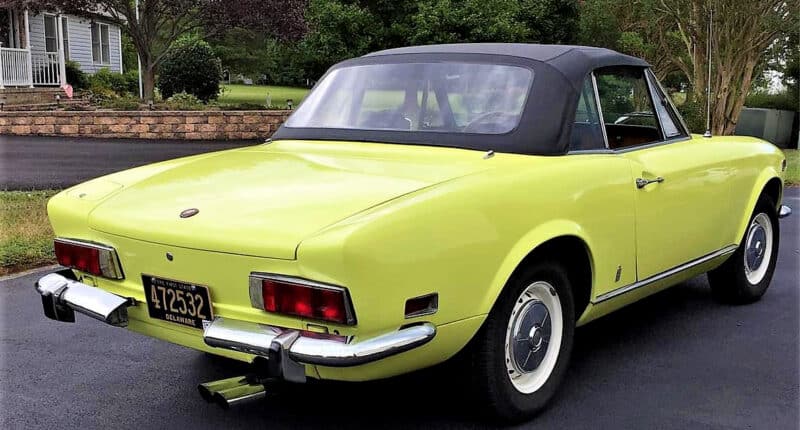Window tint is a seemingly arbitrary upgrade that you’d think doesn’t require any special regulations in Delaware.
Unfortunately, it’s not as simple as that. If you want to get your car windows tinted, you’re going to have to follow a certain set of rules that dictate how dark and reflective your tint can be.
Failure to do so will require you to pay heavy fines if and when you’re pulled over. Law enforcement officials typically carry electronic devices that can measure the level of tint you have on your windows.
It may seem like tint laws are innocuous enough and that you can even skip paying attention to them, but that definitely isn’t the case.
In this guide, we’ll explore the dos and don’ts of getting your car windows tinted in Delaware.
Is Window Tint Legal in Delaware?

Delaware’s window tint laws were enacted in 1992, and according to these laws, you can definitely get your windows tinted in the state.
However, the tinting film that you choose is going to have to meet certain guidelines set forth by the state’s Division of Motor Vehicles.
These guidelines clarify how dark the tint can be, which windows can be tinted, and what penalties you’ll incur if you don’t adhere to any of the official guidelines.
Permitted Window Tint Darkness
“Window tint darkness” refers to the opacity or transparency of your window tint film.
Dark tints don’t allow much light to filter through them, which makes them a great option if you’re looking for privacy and keeping the glare and heat out.
However, it’s worth noting that extremely dark windows arouse suspicion and they’ll most certainly cause you to be pulled over.
This is because dark tints are often used to conceal illegal activity. For instance, 5% tints can be used to prevent law enforcement officials from identifying any persons of interest they’re on the lookout for.

Like other states, Delaware uses “visible light transmission” (VLT) as a unit of measurement to gauge tint darkness. VLT refers to the percentage of light that can pass through a tinted surface.
For example, a 30% VLT tint film will only allow 30% of the ambient light to pass through. VLT is affected by the darkness of the tint. The more transparent the film is, the more light it will let through.
Many luxury cars have tinted windows from the factory which can be replaced with aftermarket tint as long as you know how to remove window tint the right way.
The various VLT levels for different vehicles, as dictated by Delaware’s state laws, are listed below.
Sedans
Windshield: Tinted film of any VLT level is allowed as long as it is above the AS-1 line as defined by the manufacturer. If there is no AS-1 line, the film can be stuck within five inches from the top of the windshield.
Driver-side windows: Factory-installed tinted glass is allowed, but it should have a VLT level of at least 70%. Aftermarket tints are banned for driver-side windows.
Passenger-side windows: Tinted film at all VLT levels is legally permitted.
Rear window: Any level of darkness is permitted in the tint for rear windows.
SUVs and Vans

Windshield: The same tint laws that apply to sedans apply to SUVs and vans. Tinted film at all VLT levels is permitted above the manufacturer’s AS-1 line.
Driver-side windows: Aftermarket tint is illegal, but factory-installed tinted glass with a 70% VLT level is allowed.
Passenger-side windows: Any amount of tint darkness is permitted.
Rear window: Any amount of tint darkness is permitted.
Acceptable Tint Reflection
There are also laws in place that limit how reflective the tinted film can be. It should be noted that tint darkness and reflection are different qualities.
Tint darkness refers to filtering the amount of light passing through, whereas reflective glass has more to do with how much light it reflects.
Reflective windows are like 2-way mirrors and they do an excellent job at keeping glare and heat out of your cabin. The more reflective your tint is, the harder it’s going to be to look through it.
The tint reflection guidelines defined in the tint laws of Delaware are as follows.
Sedans

Windshield: Must be completely non-reflective
Driver-side windows: Cannot be mirrored or reflective
Passenger-side windows: Cannot be mirrored or reflective
Rear window: Cannot be mirrored or reflective
SUVs and Vans
Windshield: Entirely non-reflective
Driver-side windows: Cannot be mirrored or reflective
Passenger-side windows: Cannot be mirrored or reflective
Rear window: Cannot be mirrored or reflective
Other Delaware Tint Rules You Need to Know
Some more laws that you should keep in mind:
- Side mirrors: If the rear window is tinted, working side mirrors are compulsory.
- Exempted vehicles: Law enforcement vehicles, collector vehicles, and K-9 unit vehicles are exempted from Delaware’s tint laws.
- Colors: There’s no restriction on the color of the tint that can be used.
- Manufacturer’s certificate: A certificate is not necessary from the manufacturers for their film; the customers need to ensure that the film complies with all legal standards set forth by the State of Delaware.
- Stickers: Legally allowed tinting needs to be marked by the presence of a sticker between the glass and the tinted film on the driver’s side window. No other stickers, except for ones mandated by the law, are allowed on the windshield and front windows.
- Medical exemptions: Exemptions are made for medical cases if an application and doctor’s certificate are provided and approved.
- Penalties: In case you violate any of the state’s tint laws, you will be liable to pay anywhere between $28.75 and $100 as a fine.
State of Delaware Info

Named after the Delaware River, Delaware is the 6th most densely populated state in the U.S., though it is also the 2nd smallest state.
The state shares borders with Pennsylvania in the north, Maryland in the west and south, and the Atlantic Ocean and New Jersey in the east.
While historically indigenous land that was later colonized by the Dutch, Delaware today is a hotspot for corporate bodies, home to over half of all businesses listed on the New York Stock Exchange.
Population: 1,003,384
Capital: Dover
Registered vehicles: 417,700
Total lane miles: 14,069
Number of highways: 3
Tint law references: Division of Motor Vehicles | Delaware Code

